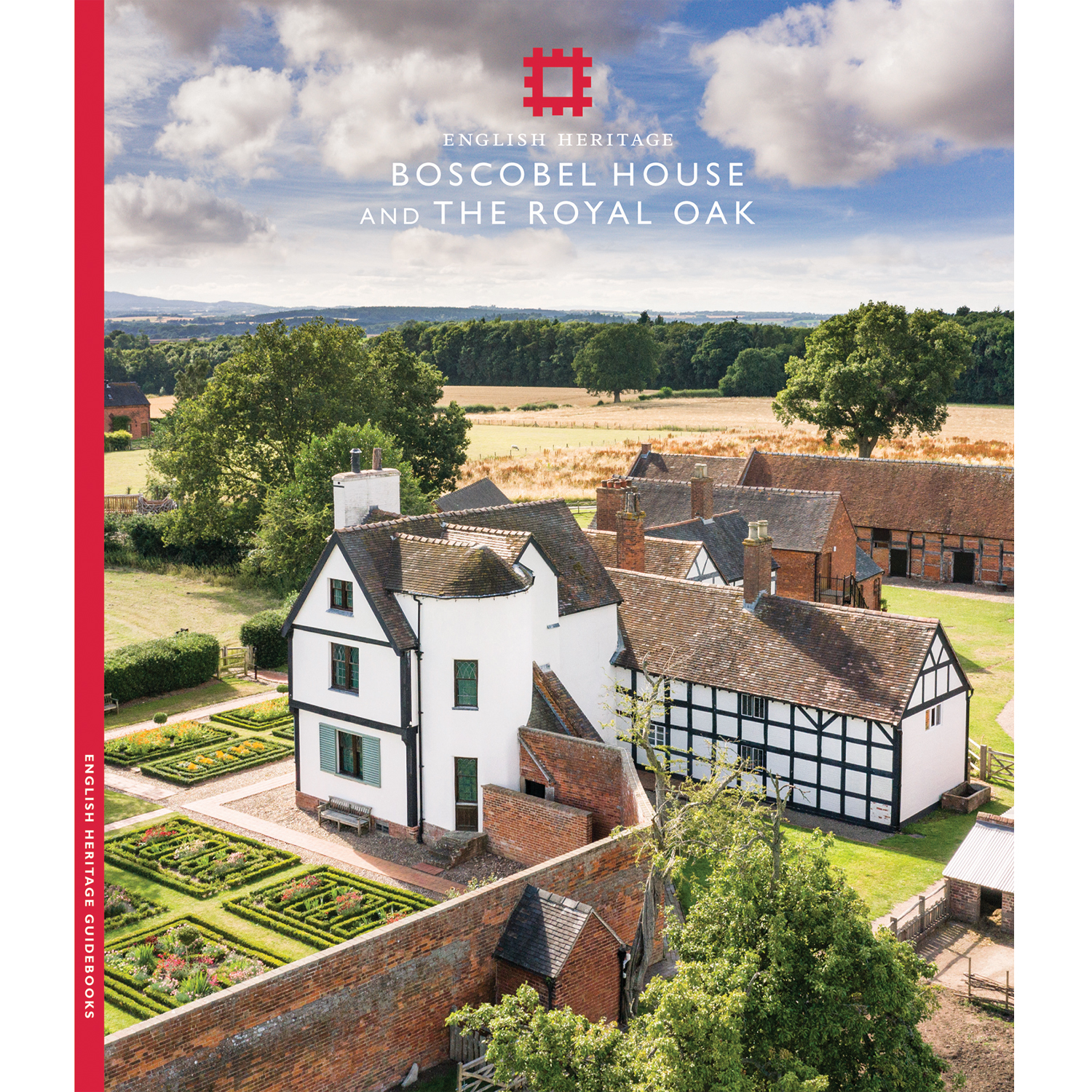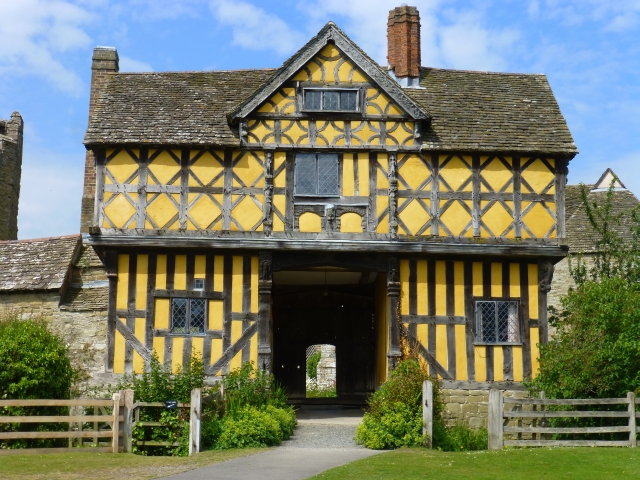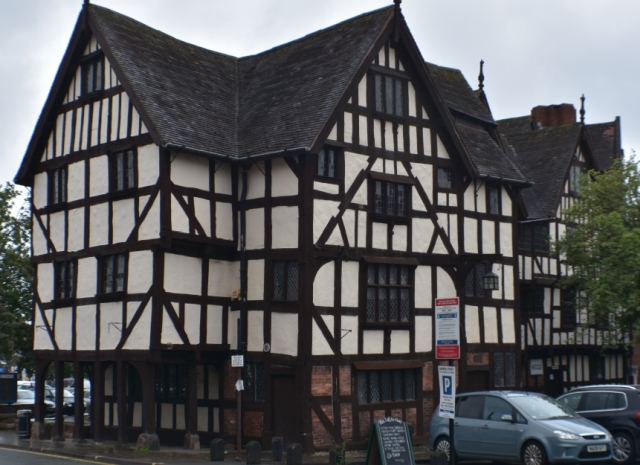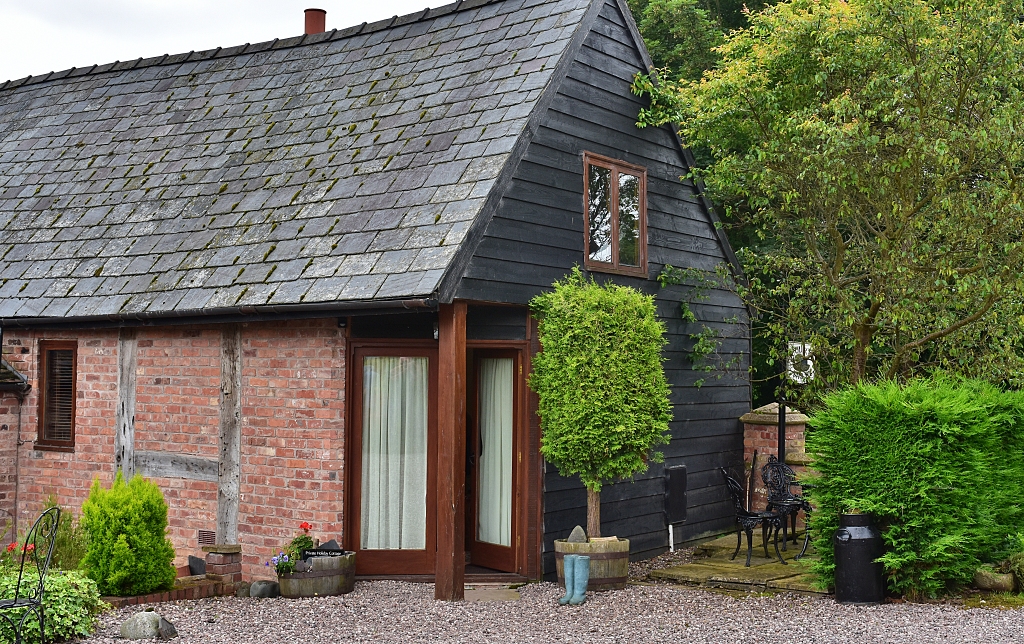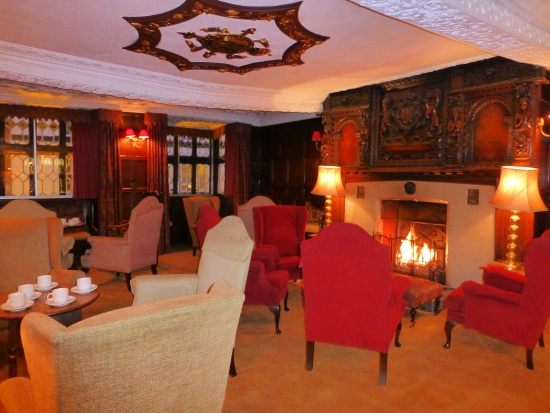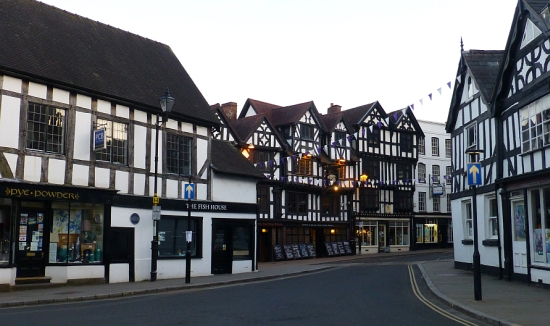Boscobel House
and The Royal Oak
You're sitting in a quiet village pub with a cold beer, waiting for your friends
to arrive. The pub's name is The Royal Oak, but you have never considered why so many pubs bear this name. The reason for that is a man called Charles, who, back in 1651, lost a fight in Worcester. Hunted high and low, he took shelter in a large, leafy oak tree one night. Concealed by leaf and branch, he evaded his chasers, escaped to the continent and... returned a few years later to be crowned King of England.
The man was King Charles II. The fight he lost was The Battle of Worcester. The oak he hid in stood in a woodland belonging to Boscobel House.
And the story of the king's escape and deliverance is the source of the popular pub name: The Royal Oak.
Built in the early 17th century by John Gifford, Boscobel House wasn't anything special. It wasn’t grand, fortified or a castle - just a woodland lodge. The family living there held to the catholic faith, and - at a time when Catholics were hunted - was used to hiding their priests.
When they sheltered another hunted man in 1651, they did so to show their loyalty to the Stuart kings. And in doing so, they made Boscobel House a part of English history.
The Civil War and The Battle of Worcester
The English Civil war stared in 1642 during the reign of King Charles I. He clashed with parliament over many matters, including his marriage to the catholic French princess Henrietta Maria, and his strong views on the Devine Right of Kings, which eventually led to him dissolving parliament in 1629.
Charles didn't just rule without parliament, he also attempted to imprison its leaders. In the end, both sides raised armies and fought each other. In 1648, the Parliamentary Army defeated the king's forces. King Charles I was tried in High Court, found guilty of treason, sentenced to death, and executed by beheading in January 1649.
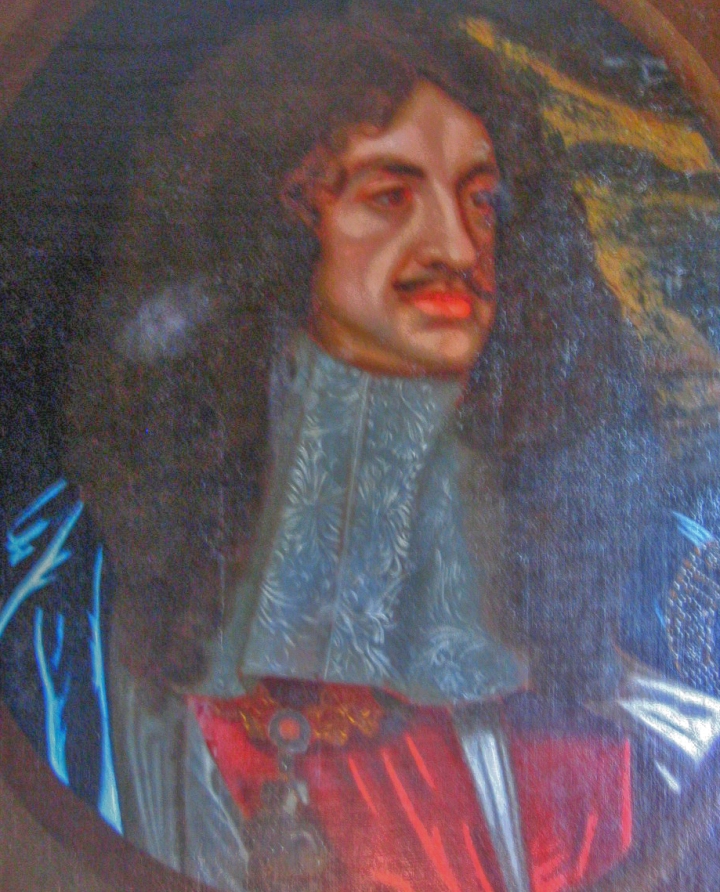 King Charles II (photo of picture in Boscobel House)
King Charles II (photo of picture in Boscobel House) © essentially-england.com
His eldest son, Charles, lived in exile in France, unable to claim the crown he had inherited at his father's death. Eventually, Charles travelled to Scotland, was crowned King of Scotland, and raised an army of Scottish and catholic supporters to continue the fight.
The Battle of Worcester took place on the 3rd September, 1651. It's considered the last battle of the English Civil War, and saw the Royalist army defeated by Oliver Cromwell's Parliamentarians.
Charles escaped the battlefield, first heading north, then south to the coast and back to
France - all while relying on the help, discretion, and protection of friends and catholic families.
Charles stayed in France, while Oliver Cromwell - the Lord Protector - ruled England. It was only after Cromwell's death in 1658, that Charles could contemplate a return to England.
In the end, he returned in triumph and was crowned King Charles II of England at Westminster Abbey on the 23rd of April 1661.
The Great Escape
The Battle of Worcester was a bloody affair. After hours of fighting, Charles and members of his army escaped from the battlefield and started north towards Scotland. Exhausted soldiers clogged the road, impeding the progress of the Royal party and making Charles an easy target. During consultation with his remaining officers, one Charles Giffard suggested moving to White Ladies Priory where they could rest and make plans. So, a small group drifted away from the northern road and reached White Ladies, fifty miles from Worcester, at daybreak.
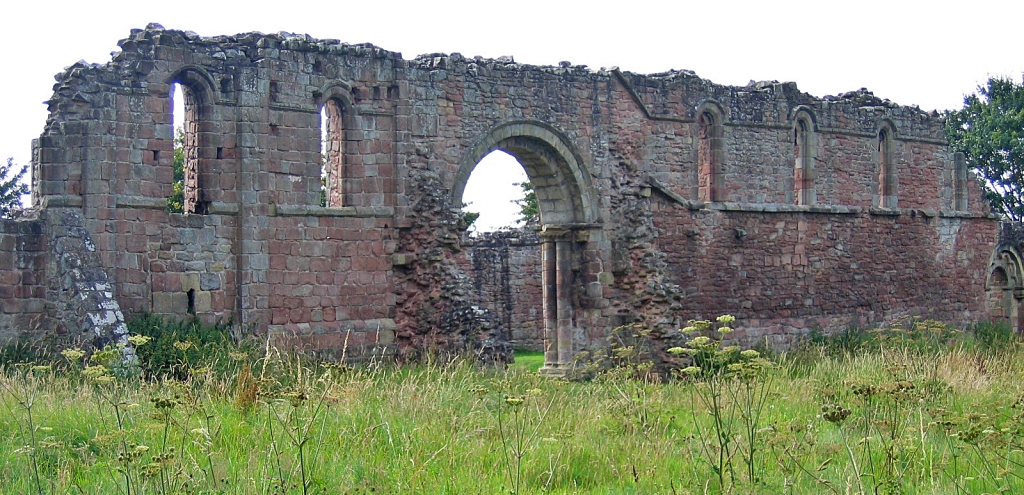 White Ladies Priory Ruins © essentially-england.com
White Ladies Priory Ruins © essentially-england.comWhite Ladies Priory was on the Giffard family estate and about a mile away from Boscobel House. The five Penderel brothers, servants of the estate, were summoned to look after the king. As the seekers closed in, offering large rewards for information on Charles’ whereabouts, and death sentences for any who assisted him, the brothers disguised the king as a woodman. They dressed him in rough clothes, cut his hair, and dirtied his skin with fire ash.
With Scotland unreachable and the way to London blocked by the Parliamentarian army, Charles planned to reach Swansea and a ship to France. Guided by the Penderel brothers, the royal party travelled from White Ladies, via Hobbal Grange and Evelith Mill to Maderley, where they found the crossings into Wales heavily guarded.
Two days later, they returned to the Giffard family estate and Boscobel House tired and hungry, and met with another of Charles’ officers, Major William Careless. It was he who recommended staying away from the house and woods in case they'd be searched and suggested hiding in the oak tree.
Major Careless and Charles were given food and water and helped into the tree by two of the Penderel brothers. The rain was pouring down, the soldiers came and searched the house and woods, but Charles was safely hidden up above them.
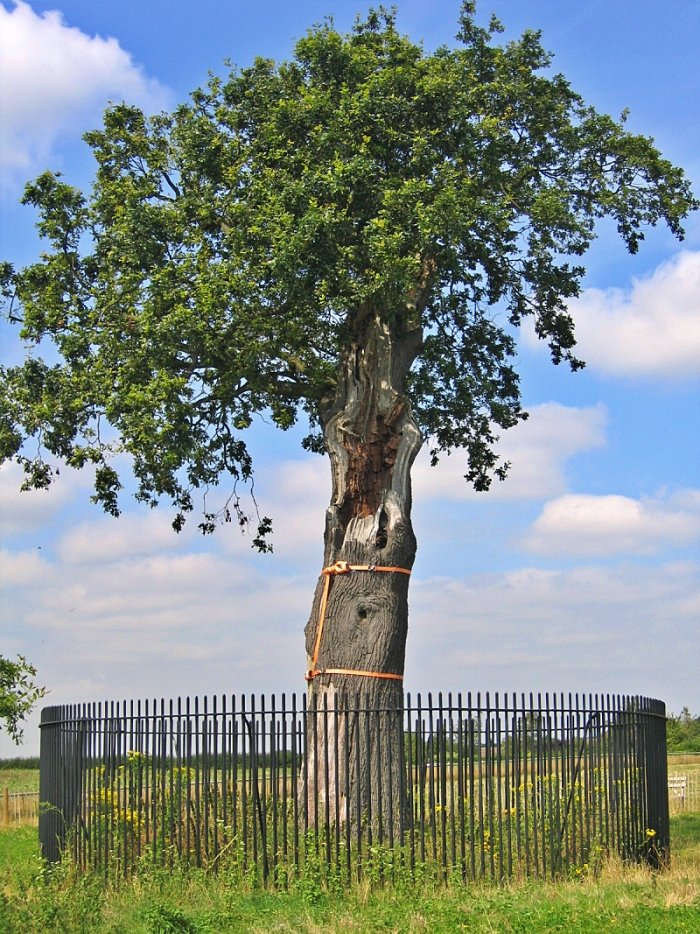 The Royal Oak at Boscobel House
The Royal Oak at Boscobel House © essentially-england.com
That evening, Charles and Major Careless returned to Boscobel House to dry off and warm up, and Charles spent the night cramped in a priest hole in the attic.
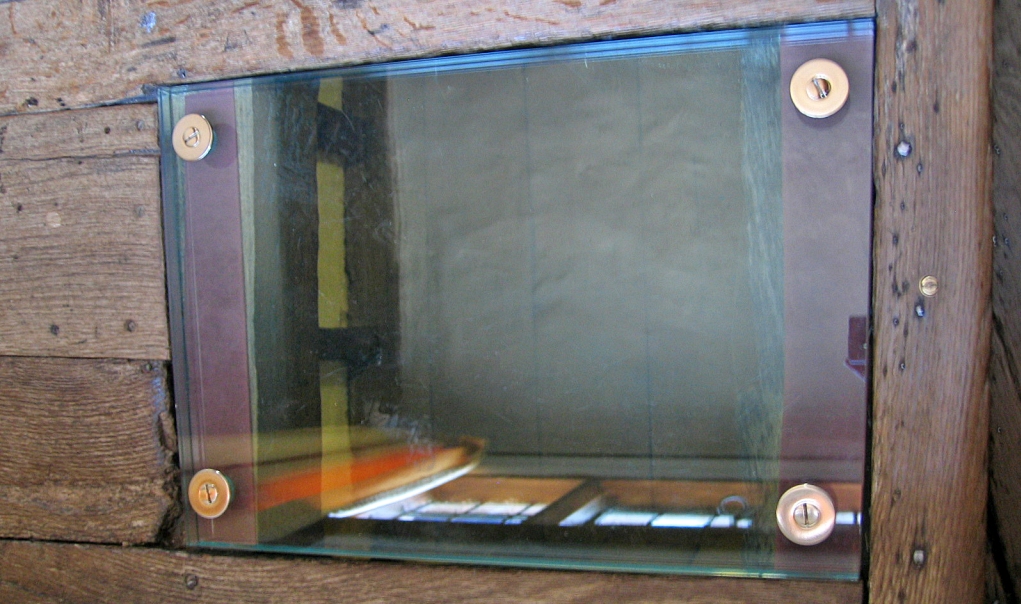 Looking Down into The Kings Preist Hole at Boscobel House © essentially-england.com
Looking Down into The Kings Preist Hole at Boscobel House © essentially-england.comThe Penderel brothers gathered information on troop movements and collected news from other catholic families, while Charles spent some time reading and relaxing in an arbour on a hillock overlooking the gardens of Boscobel House. That evening, Charles left with the brothers to go to Moseley Hall to meet a Mrs Jane Lane who had a military pass that allowed her to travel to Bristol to see her pregnant sister. Charles was to travel with her as her attendant.
They travelled via Bentley Hall, Stratford-upon-Avon, Cirencester, and to Bristol, where Charles could not find a ship sailing for France. On he went to Bridport, along the south coast to Brighton, eventually finding berth on a ship leaving Shoreham for Rouen in France. It was a stressful and dangerous six-week journey to get from Worcester to France.
Boscobel House
In the mid-1500s, after King Henry VIII became head of the newly-created Church of England, the country suffered through a period of catholic persecution. Catholics were regarded as the enemies of England’s protestant king and government. Large fines were levied on those who continued to hold catholic services. Repeat offenders faced arrest and priests attracted even stricter punishments, including death.
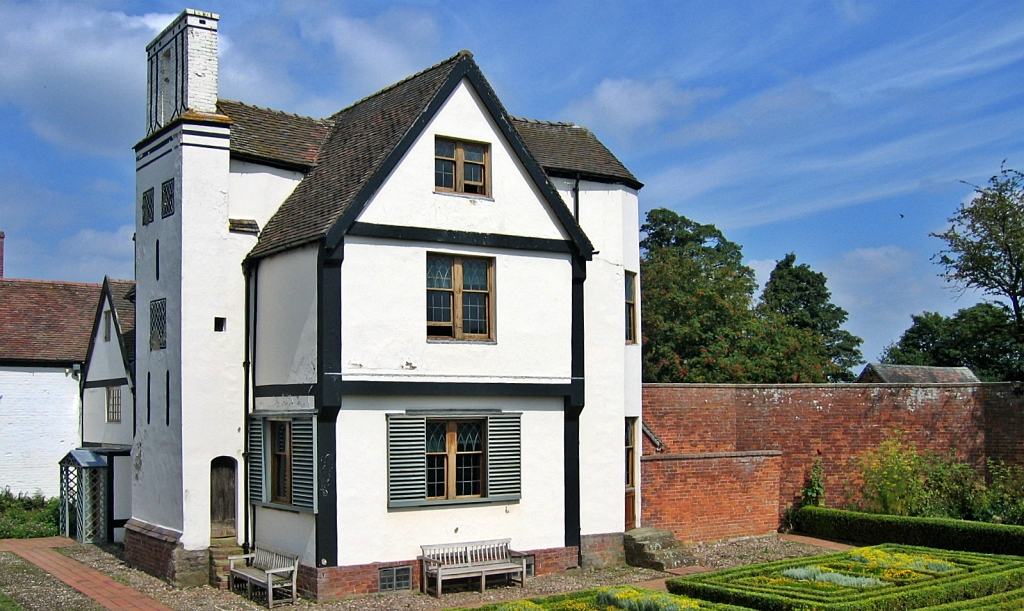 Boscobel House © essentially-england.com
Boscobel House © essentially-england.comAs a practicing catholic, John Giffard included secret hiding places in his plans when he converted a remote farmhouse into Boscobel House. These priest holes were a common feature in the homes of catholic families.
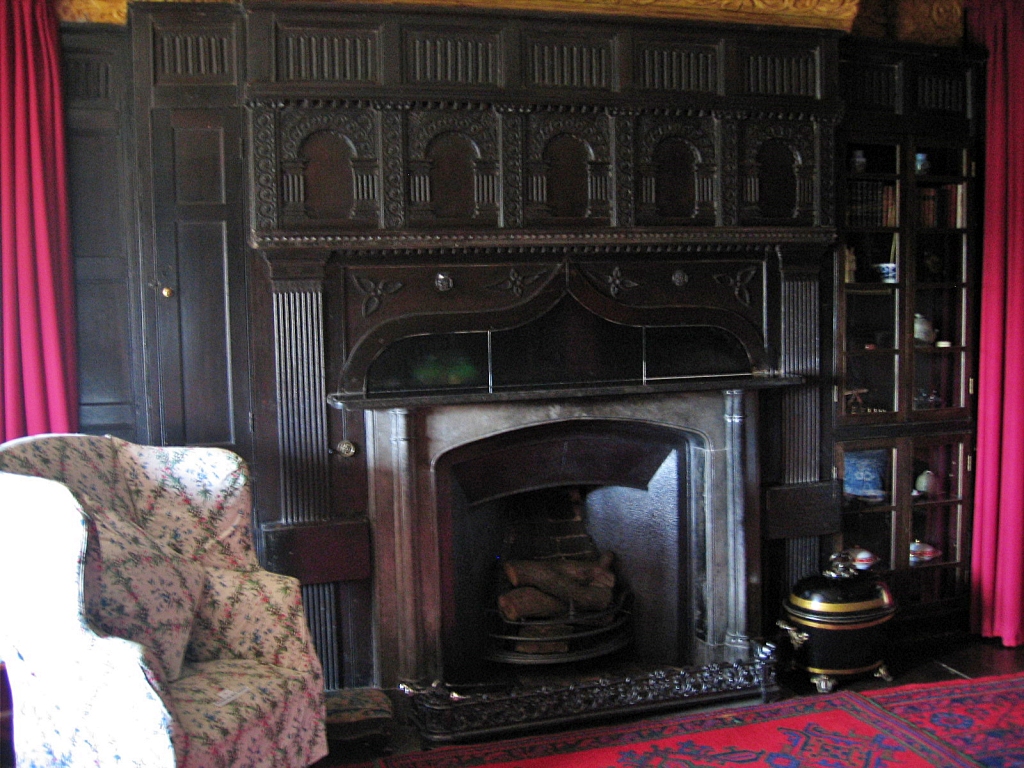 Boscobel House Parlour Fireplace © essentially-england.com
Boscobel House Parlour Fireplace © essentially-england.com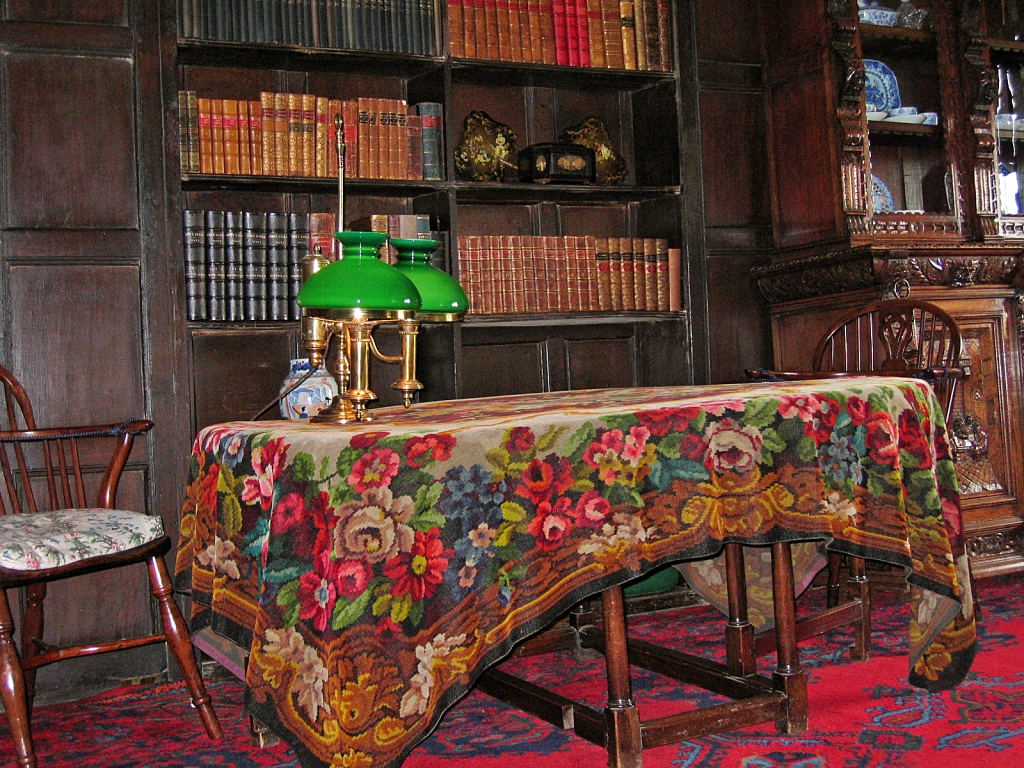 Inside Boscobel House © essentially-england.com
Inside Boscobel House © essentially-england.comOver the years, its owners extended and modified Boscobel House. Made of brick and painted black and white to look like the original timber-framed walls, the extensions are easy to spot. The house stayed in the ownership of descendants of the Giffard family until 1812, when Walter Evans purchased Boscobel. The Evans family refurbished the house and improved the farmyard and farming techniques. They also tried to replicate the style of garden that King Charles II would have sat in, including an arbour on a mound!
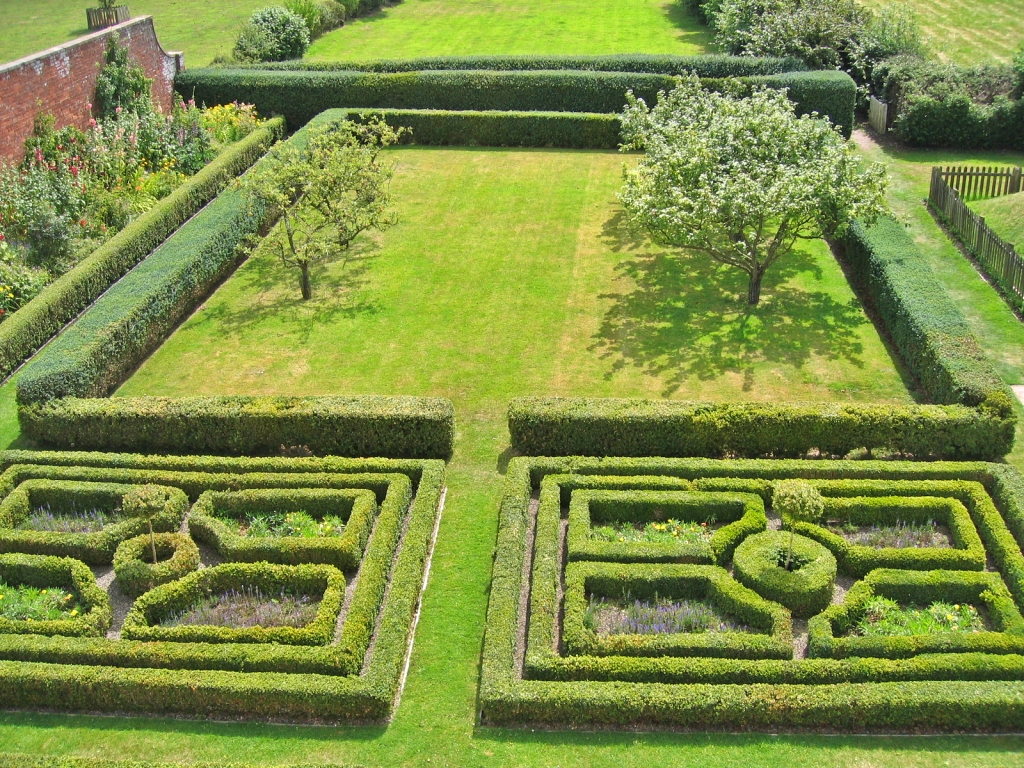 View over the Gardens of Boscobel House © essentially-england.com
View over the Gardens of Boscobel House © essentially-england.comThe Royal Oak
The oak we see today isn't the tree Charles and Major Careless climbed. That tree died at the end of the eighteenth century as visitors kept taking their own mementos, but the surviving, storm-damaged tree is a descendant of the original. In 2001, Prince Charles planted a sapling grown from an acorn from this tree to celebrate 350 years since Charles II and Major Careless hid in The Royal Oak.
The Farmyard
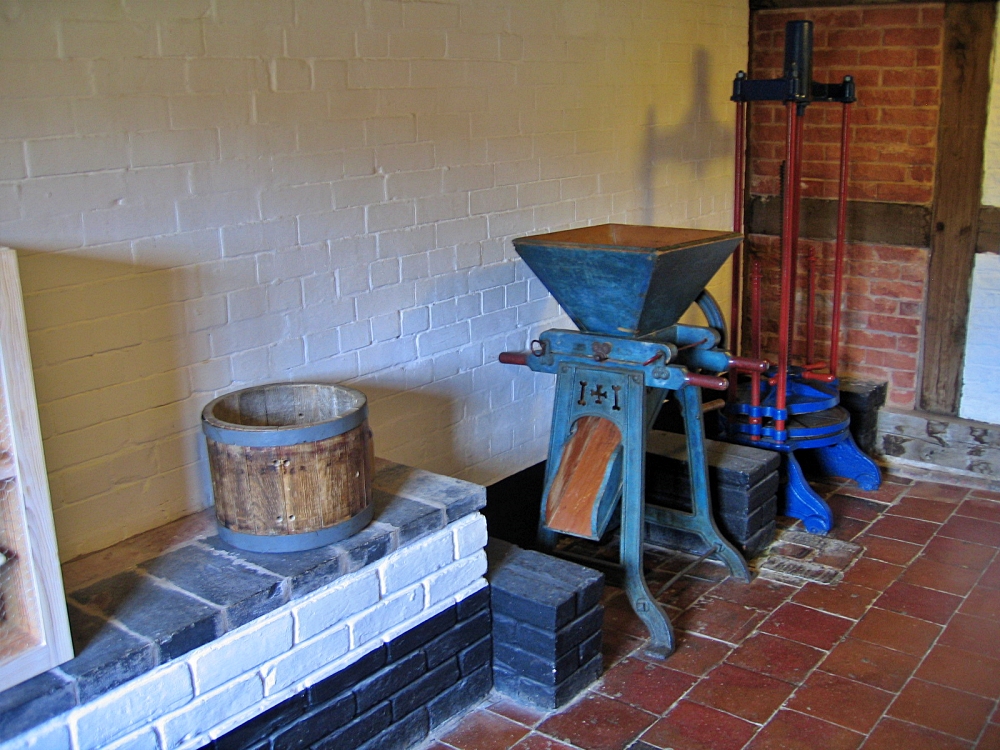 The Dairy at Boscobel House © essentially-england.com
The Dairy at Boscobel House © essentially-england.com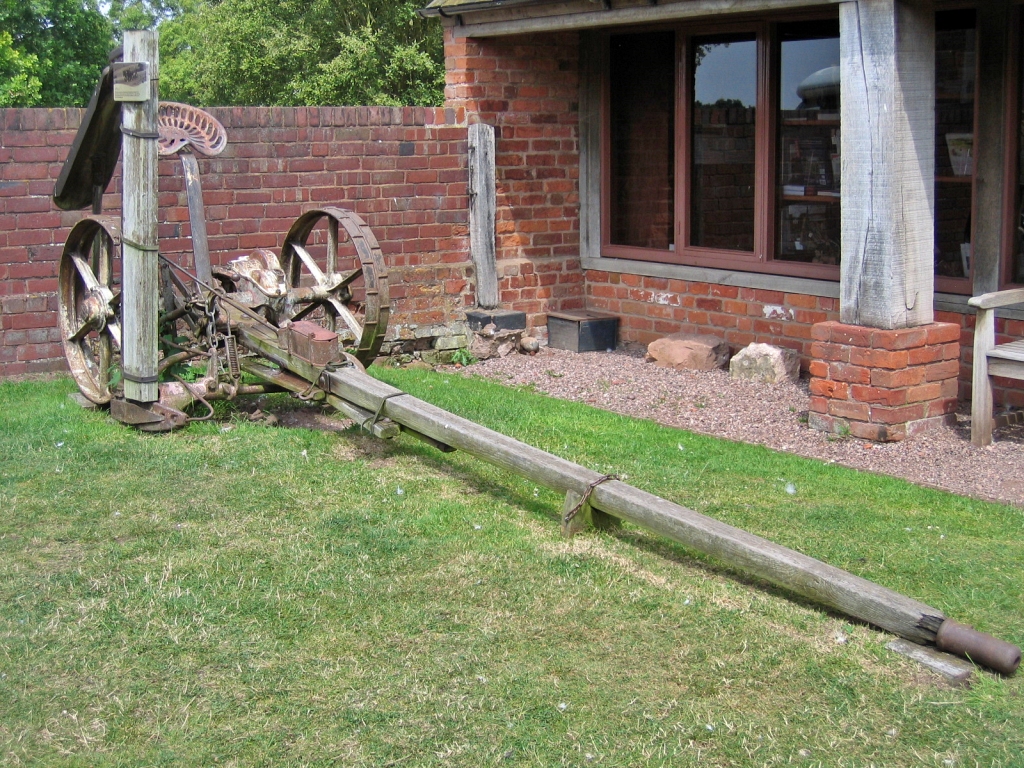 The Farmyard at Boscobel House © essentially-england.com
The Farmyard at Boscobel House © essentially-england.comThe farmyard area has cowsheds, stables, blacksmith workshop, and dairy house dating from around the early nineteenth century after the Evans family started improving the farming techniques used at Boscobel.
White Ladies Priory
It’s worth taking the short walk to White Ladies Priory, either on the narrow lane or on footpaths across the fields. It’s about 10 minutes away. We visited in late July and found our legs had been bitten to death by something in the fields!
The priory was founded in the twelfth century and was known as The Priory of St. Leonard at Brewood. The name White Ladies Priory comes from the white robes the nuns of the priory wore. It was never a large priory and what remains are the ruins of priory church. Even though it wasn’t a rich priory you will still see several decorated archways and quality stone workmanship.
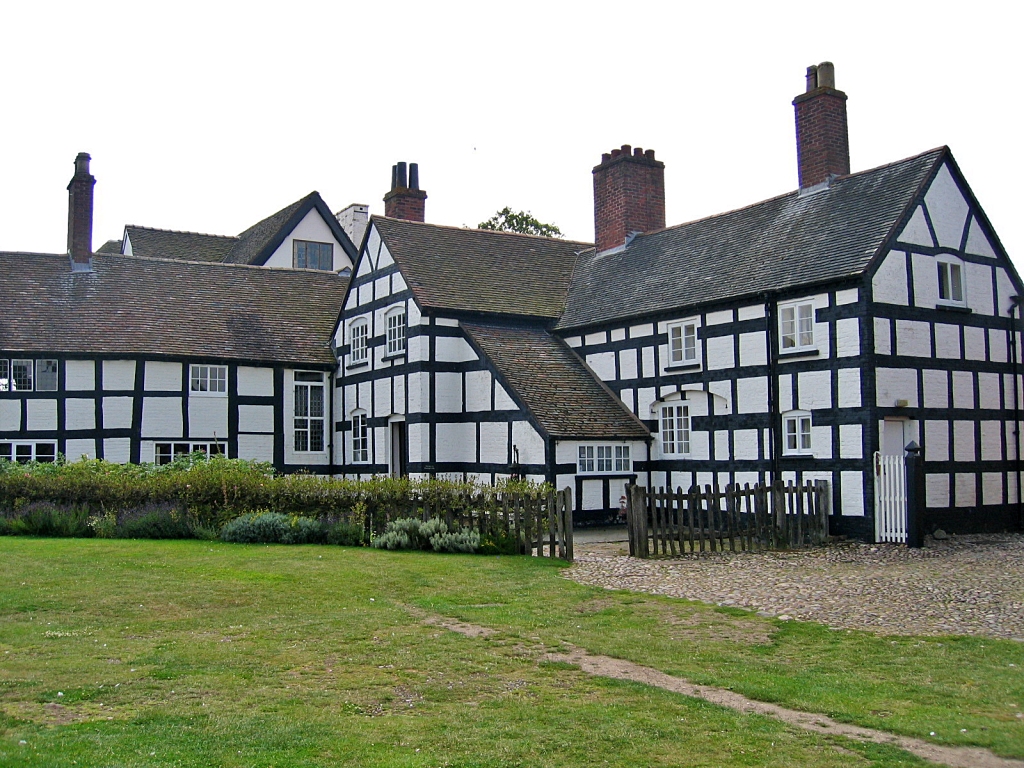 Boscobel House © essentially-england.com
Boscobel House © essentially-england.comYou can find more information on Boscobel House and its opening times on the English Heritage website here. There is also a guidebook which gives more details and history about the house and the escape of Charles.
Boscobel House Guidebook and Gifts
Are You Planning a Trip to Shropshire?
Shropshire is a marvellous place for history and food lovers! There's so much to see and do and taste, that you'll need more than just a short visit. If food is your thing, head to Ludlow and start exploring from there. For history lovers, Shrewsbury makes a great base with many historical sites in very easy reach.
Where You Could Stay
To see more self-catering cottages in Shropshire click here or check out holiday cottages in other parts of England by clicking here.
If you need to find a hotel, then try one of these search platforms...
What You Could See and Do
Here are a few places that should go on your must-see list:
- Wroxeter Roman City
- Shrewsbury Abbey
- Shrewsbury
- Attingham Hall and Parkland
- Cantlop Bridge
- Snailbeach Mine
- Much Wenlock
- Offa's Dyke
- Ironbridge Gorge, The Iron Bridge & Broseley Jitties
- Ludlow Castle
- Stokesay Castle
- Bridgnorth
Click here for a great list of things to do in Shropshire.
If you have enjoyed reading about Boscobel House and are looking for other ideas for days out, then please click here to explore our Shropshire page.
Boscobel House and White Ladies Priory also appear in our Tour of Shropshire: Chasing King Arthur page.
